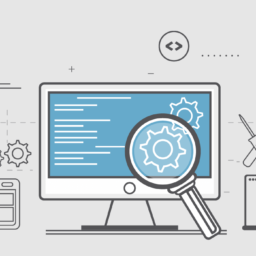Defect tracking system has its roots in agile software development; it has been able to gain a lot of traction in the market, especially for software and software as a service (SaaS) companies, over the past few years owing to the rapid growth of agile software development. Essentially, the simple process of identifying, tracking, reporting, and managing the issues and problems in software can be defined as the fundamental objective of the defect tracking software.
A complex yet critical step in the software development cycle, defect tracking system streamlines the testing process, and enables the development team to discover issues early in the development phase and come up with practical solutions to resolve them.
What Makes an Effective Defect Tracking and Task Management System?
The ultimate purpose of a proficient defect tracking software is to facilitate the teams to organize, manage, and resolve issues in the software. For easier tracking of the issue, and for future reference as well, all information related to a particular defect or issue is logged in and recorded in the defect tracking system. It is also important that this information is easily accessible to the development team so that the development team is able to make informed decisions about the software.
Information regarding a particular defect generally comprises of;
– The impact of the defect on the overall software and the level of severity
– When was the defect reported?
– Who reported the defect in the system?
– Priority of this defect in the whole
– The measures used by the development team to fix that issue
– How long did it take to resolve the issue and what was the main source of the defect?
Key Aspects of Defect Tracking System
In large scale and complex projects, there are multifarious risks of not using an adequate defect tracking system to organize and manage issues in the software. If the defects and bugs are not organized properly, important and high priority defects are bound to get lost. Without recording and tracking of the issue, it would be hard to keep track of the progress and status of the issue, and it is possible that the development team might do duplicate work. Hence, it is important for the company to use a defect tracking system that facilitates them in mitigating these risks and improves their business process with a robust set of characteristics.
Some of the predominant features in a defect tracking system for better organization and management of issues include;
Status and Priorities – the team is able to keep track of the issues and its status at any time
Bulk editing – bugs are fixed in batches which proves to be time-efficient for teams
Reporting – logging in the process of resolving issues and time it takes to fix problems
Filtering – allows the user to see the issues not just in the list view but also according to themes and create a better story
Calendar and due dates – allows the users to set a deadline and allocate tasks accordingly.

